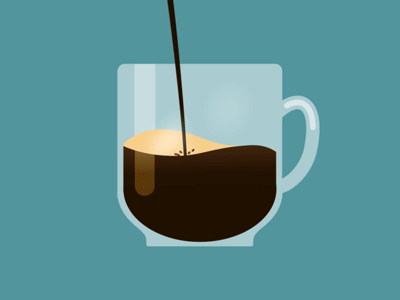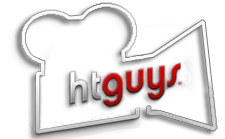 May 18
May 18 Podcast #531: Quantum Dot Display Technology
 OLED TVs may have stolen the show at CES 2012, but just when you think it’s safe to be an early adopter and pick one up, you might want to hold off. There’s a new display technology on the horizon that backers claim will not only outperform OLED, but also be cheaper to manufacture. And it has a much cooler name - it’s called Quantum Dot display or QLED. And if that doesn’t sound like you’re living in the future, we don’t know what does.
OLED TVs may have stolen the show at CES 2012, but just when you think it’s safe to be an early adopter and pick one up, you might want to hold off. There’s a new display technology on the horizon that backers claim will not only outperform OLED, but also be cheaper to manufacture. And it has a much cooler name - it’s called Quantum Dot display or QLED. And if that doesn’t sound like you’re living in the future, we don’t know what does.
| Download this Episode. |
Listen to the show
Today's Show:
Blu-ray Reviews:
News:
- NBC Broadcasting head no fan of Dish's commercial-skipping device
- Sony and Panasonic reportedly working together on OLED TV partnership
- NBC: DVR numbers lowballed
Other:
- Win a pair of Audioengine A5+ speakers
- Berkeley DIYer Creates Ultimate Automated Dorm Room
- ProjectorReviews.com Comparison Report 2012 - Award Winners
- Dolby Introduces TrueHD 96kHz Upsampling
- FreePreview.TV: Free Preview Listings for Showtime, HBO, Starz, and More!
- Worldwide Soundbar Sales Double In '11
- Internet Video Drives Smart TV Usage in the U.S., But Not Europe
- Disgruntled customers rejoining Netflix service
Amazon Prime:
Sign up for Amazon Prime and enjoy:
- Free Two Day Shipping!
- Instant Streaming of TV Shows and Movies
- Instant Access to thousands of Kindle Books
- The HT Guys gratitude!
Quantum Dot Display Technology
OLED TVs may have stolen the show at CES 2012, but just when you think it’s safe to be an early adopter and pick one up, you might want to hold off. There’s a new display technology on the horizon that backers claim will not only outperform OLED, but also be cheaper to manufacture. And it has a much cooler name - it’s called Quantum Dot display or QLED. And if that doesn’t sound like you’re living in the future, we don’t know what does.
Background
Typically the chemical composition of a material determines the color of light it will produce, whether you’re talking about CRT, LCD, LED or Plasma. But scientist have found that size matters as well. When you’re dealing with very, very small semiconductors, less than 10 nanometers, their size can actually determine what color they produce. The tiny semiconductors are called Quantum Dots and by varying the size of the dot, you can actually produce different wavelengths of light.
Quantum dot light emitting diode (or QLED) technology is being pioneered by Massachusetts company QD Vision, a spin-off from the Massachusetts Institute of Technology. Together with technology partners such as LG, QD Vision is trying to pioneer the new technology they claim will surpass OLED in price, performance, quality and power consumption. They claim their QLEDs will be “a reliable, energy efficient, tunable color solution for displays and lighting that is less costly to manufacture [than inorganic LEDs] and that can employ ultra-thin, transparent or flexible substrates.”
How it Works
A quantum dot made from Cadmium selenide will produce light in the red region of spectrum from a 5 nm diameter dot and the violet region from a 1.5 nm dot, and anywhere in between. The energy that determines the color of the fluorescent light produced is inversely proportional to the square of the size of dot. In other words, the emitted light changes as the dot size changes. By producing dots of varying sizes on a single substrate, a manufacturer can create any wavelength of light they want. QLEDs can be tuned over the entire visible spectrum, from 460 nm (blue) to 650 nm (red).
Pros and Cons
Wikipedia has a great collection of Pros and Cons for the emerging technology:
Pros
- Color range: Nanocrystal displays should be able to yield a greater portion of the visible spectrum than current technologies...QD Vision calculates as much as 30% more of the visible spectrum would be available using QDs in a QD-LED vs. a CRT TV.
- Low power consumption: QD Vision estimates its nanocrystal displays could use 30 to 50% less electrical power than an LCD, in large part because nanocrystal displays don't need a backlight.
- Color accuracy: Nanocrystal displays would yield more purity in colors than other types of display technologies. Some display technologies, such as LCDs, can’t create a pure red, green, or blue for the display; instead, they need to add a few other colors to those three to display pure colors. Quantum dots, on the other hand, create pure red, green, and blue to create all other colors.
- Brightness: 50~100 times brighter than CRT and LCD displays ~40,000 cd/m2
- Added flexibility: QDs are soluble in both aqueous and non-aqueous solvents, which provides for printable and flexible displays of all sizes, including large area TVs
- Improved lifetime: QDs are inorganic, which can give the potential for improved lifetimes when compared to alternative OLED technologies. However, since many parts of QD-LED are made of organic materials, further development is required to improve the functional lifetime.
Other advantages include better saturated green, manufacture ability on polymers, thin display, same material used to generate difference colors, and higher resolution.
Cons
- Less saturated blue: Blue quantum dots are difficult to manufacture due to the timing control during the reaction. A blue quantum dot is just slightly above the minimum size, where red to green can be easily obtained. Sunlight contains roughly equal luminosities of red, green and blue. So in order to display an acceptable range of colors, a display needs to be capable to produce approximately equal luminosities of blue as of red and green (even though in order to achieve the same brightness as perceived by the human eyes, blue needs to be about 5 times more luminous than green; have 5 times more power).
Commercialization of quantum dot display is yet to come. Compared to LCD and OLED, the manufacturing cost of QD-LED is relatively high and development of novel and more cost-efficient fabrication process is desired in future.
Further Reading:
- Wikipedia: Quantum dot display
- Phys.org: Quantum-dot LED screens may soon rival OLEDs and LCDs
- QDVision.com: QLED Technology
- The Guardian: Why quantum dots can join every aspect of everyday life


Reader Comments (4)
For what it's worth, I would be interested in a "best of" series of bluray reviews that would showcase the top discs for home theater demo's.
Regarding the teaching of commands to a URC remote, I have found that there are some IR commands that a URC remote just will not learn. What I do in those cases is teach the command to a cheap universal remote, then use the cheap remote to teach the command to the URC. It sounds odd but most of the time it works.
Regarding the listener in Huntsville with intermittent OTA signal during storms and wind: with a set of ground-level rabbit ears, I can see this happening as nearby trees sway in and out of the line-of-sight digital signal path. The best thing to do is put a serious antenna in the attic or better yet on the roof. A good website to check out for OTA reception is tvfool.com.
For an in depth discussion of the Quantum Dot technology, Jason Hartlove, the CEO of Nanosys, Inc., was interviewed by Scott Wilkenson on Home Theater Geeks Episode 99.
http://twit.tv/show/home-theater-geeks/99
Alan
Regarding the learning of the Dish Hopper/Joey colored buttons question. I have a URC MX-850 and had the same issue to learn the colored buttons from the Joey UHF remote to the URC remote. I was lucky enough to have an older IR dish remote from my 722 dish DVR that had the colored buttons so I was able to use that IR dish remote to teach my URC the colored buttons as all my other Dish commands already were previously programmed in the URC MX-850 remote. You may be able to buy a replacement from Dish or elsewhere online just to have as a IR backup for future re-programming since URC is slow at times updating their database or to use to teach other remotes as the IR commands work fine on the Joey/Hopper as it has a IR option that can be enabled. The IR Dish remote to get is their version 20.0 IR remote that has the colored buttons and looks just like the Joey / Hopper remotes but is IR.